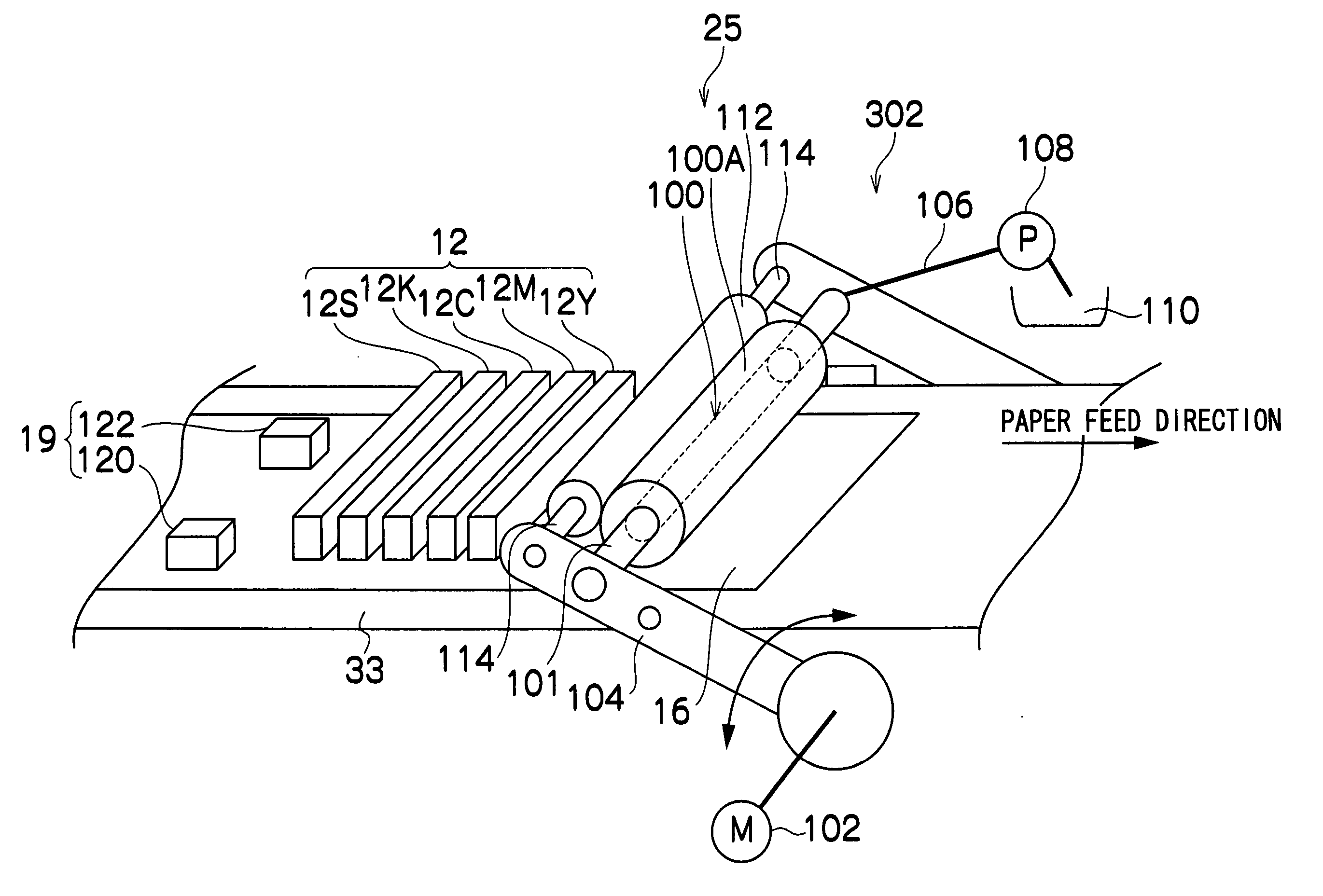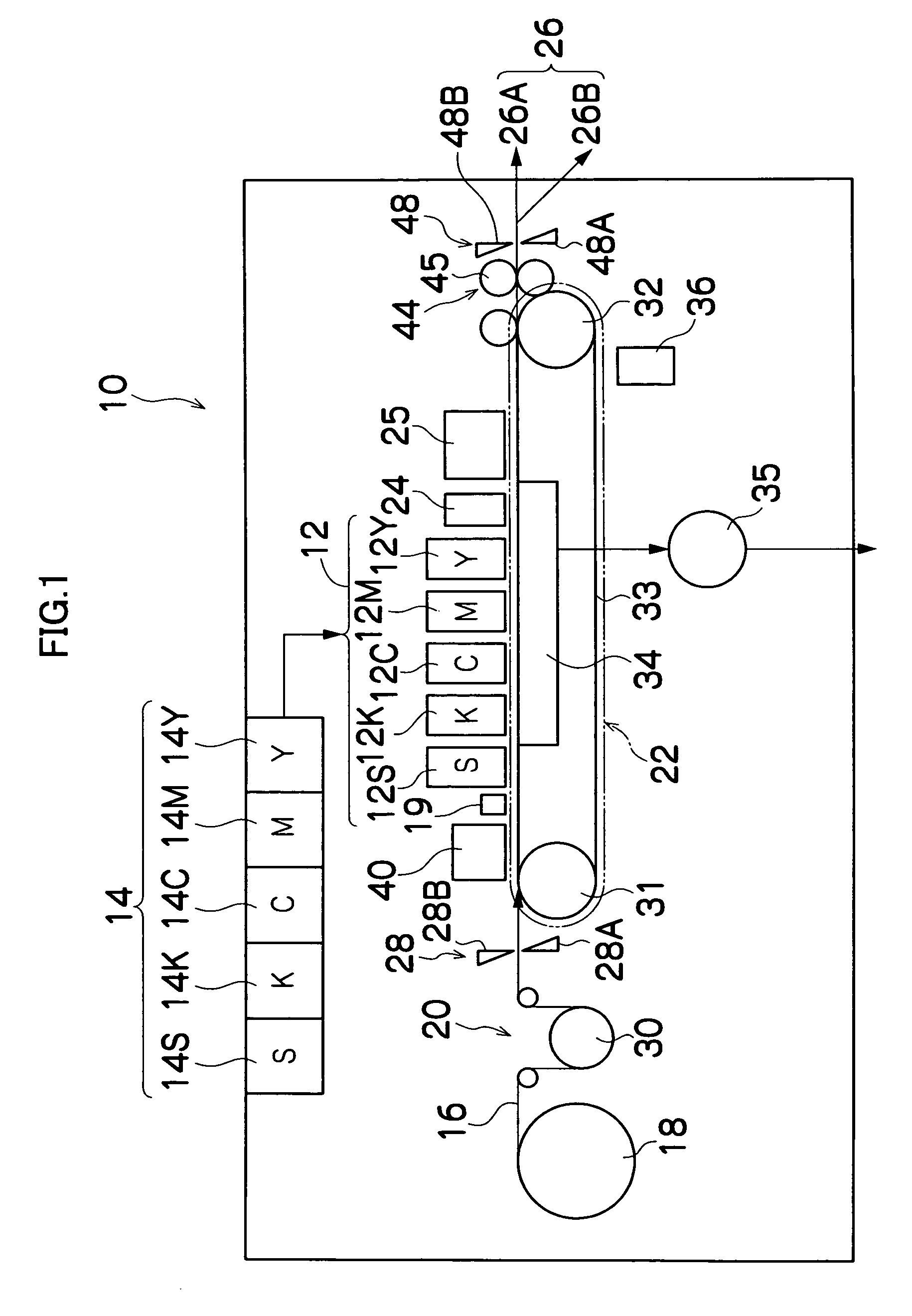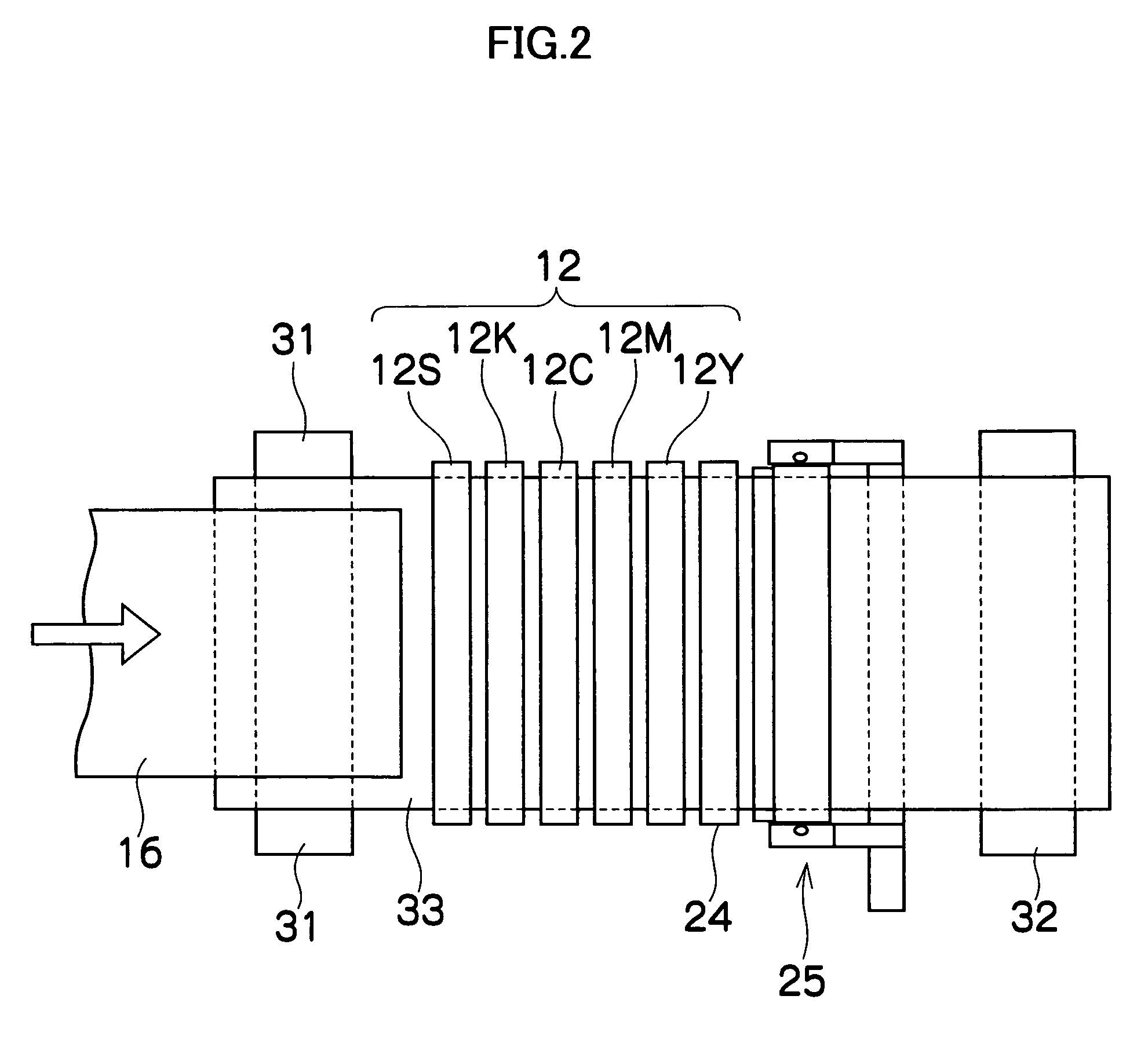Image forming apparatus
a technology of forming apparatus and forming plate, which is applied in the field of forming plate, can solve the problems of rear-side image transfer, cockling, and affecting the quality of image, and achieve the effect of promoting the fixing of ink
- Summary
- Abstract
- Description
- Claims
- Application Information
AI Technical Summary
Benefits of technology
Problems solved by technology
Method used
Image
Examples
first embodiment
General Composition of Inkjet Recording Apparatus
[0049]FIG. 1 is a diagram of the general composition of an inkjet recording apparatus according to an embodiment of the present invention. As shown in FIG. 1, this inkjet recording apparatus 10 comprises: a print unit 12 having a plurality of print heads 12K, 12C, 12M and 12Y provided for respective inks of the colors black (K), cyan (C), magenta (M) and yellow (Y), and a treatment liquid ejection head 12S, which ejects treatment liquid promoting the fixing of the ink by reacting with the ink (hereinafter, the print heads 12K, 12C, 12M and 12Y and the treatment liquid ejection head 12S are referred to generally as the heads 12A, 12K, 12C, 12M and 12Y); a storing and loading unit 14 which stores the color inks corresponding to the print heads 12K,12C, 12M and 12Y, and the treatment liquid corresponding to the treatment liquid ejection head 12S; a paper supply unit 18, which supplies a recording medium 16; a recording medium determinat...
PUM
 Login to View More
Login to View More Abstract
Description
Claims
Application Information
 Login to View More
Login to View More - R&D
- Intellectual Property
- Life Sciences
- Materials
- Tech Scout
- Unparalleled Data Quality
- Higher Quality Content
- 60% Fewer Hallucinations
Browse by: Latest US Patents, China's latest patents, Technical Efficacy Thesaurus, Application Domain, Technology Topic, Popular Technical Reports.
© 2025 PatSnap. All rights reserved.Legal|Privacy policy|Modern Slavery Act Transparency Statement|Sitemap|About US| Contact US: help@patsnap.com



